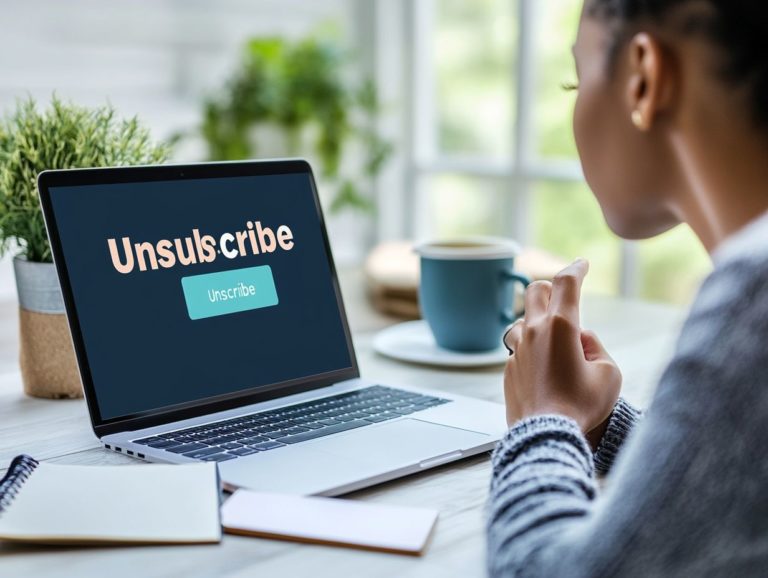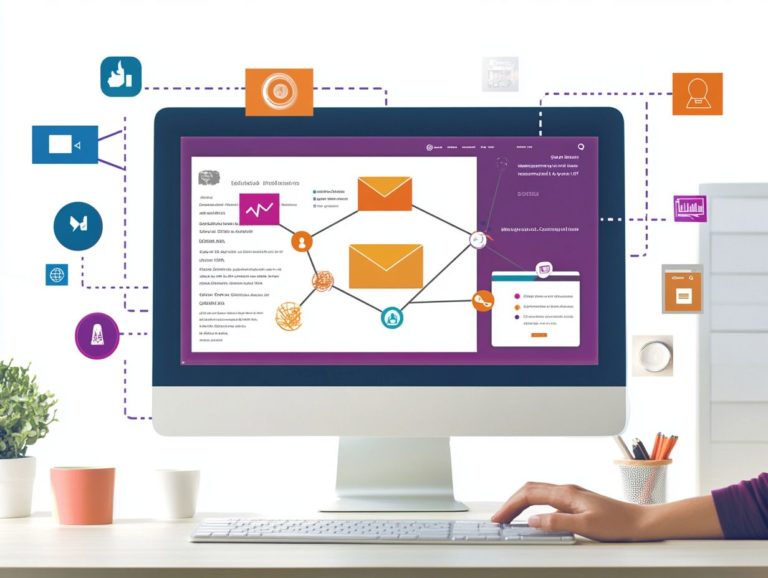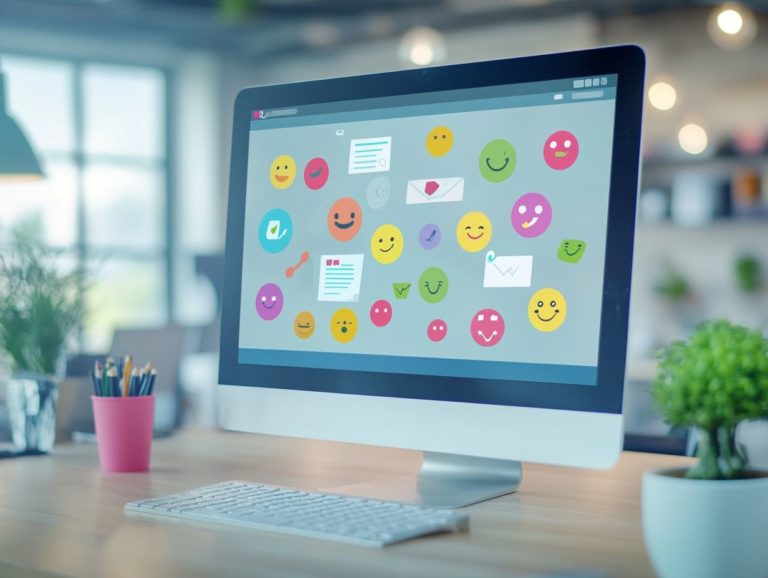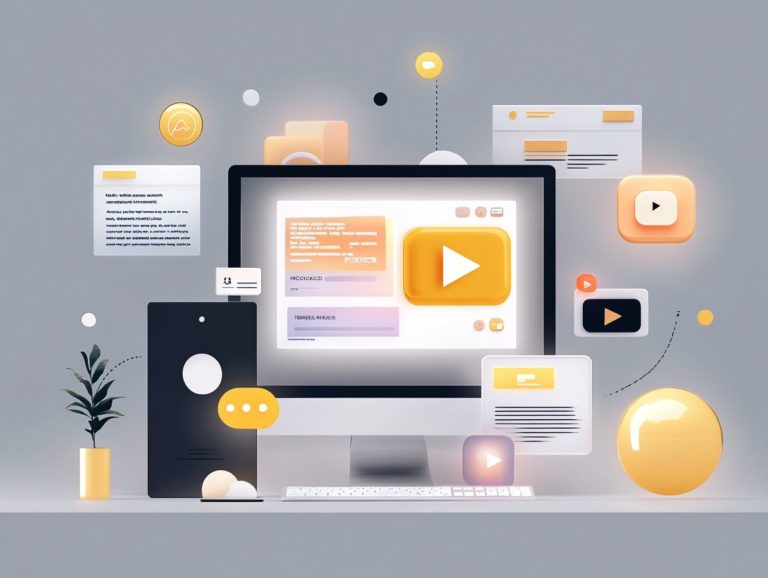The Science Behind Email Timing
Let's Set Up Your Lead Generation Strategy
Fill out the form below, and our team will get in touch with you to create a tailored solution for your business.
Timing is everything in email marketing. A carefully written message can miss the mark entirely if it arrives in your audience’s inbox at an inopportune moment.
This article explores how timing affects email performance. We will uncover peak engagement hours and the various factors that dictate when you should hit “send.”
Understanding your target audience is critical. By harnessing analytics and tools, you ll discover strategies to optimize your email timing for maximum impact.
Ready to skyrocket your email success? Let s dive in!
Contents
- Key Takeaways:
- The Importance of Email Timing
- The Best Times to Send Emails
- Let's Set Up Your Lead Generation Strategy
- Factors to Consider for Optimal Email Timing
- Tools for Determining the Best Email Timing
- Let's Set Up Your Lead Generation Strategy
- Strategies for Improving Email Timing
- Frequently Asked Questions
- Let's Set Up Your Lead Generation Strategy
Key Takeaways:
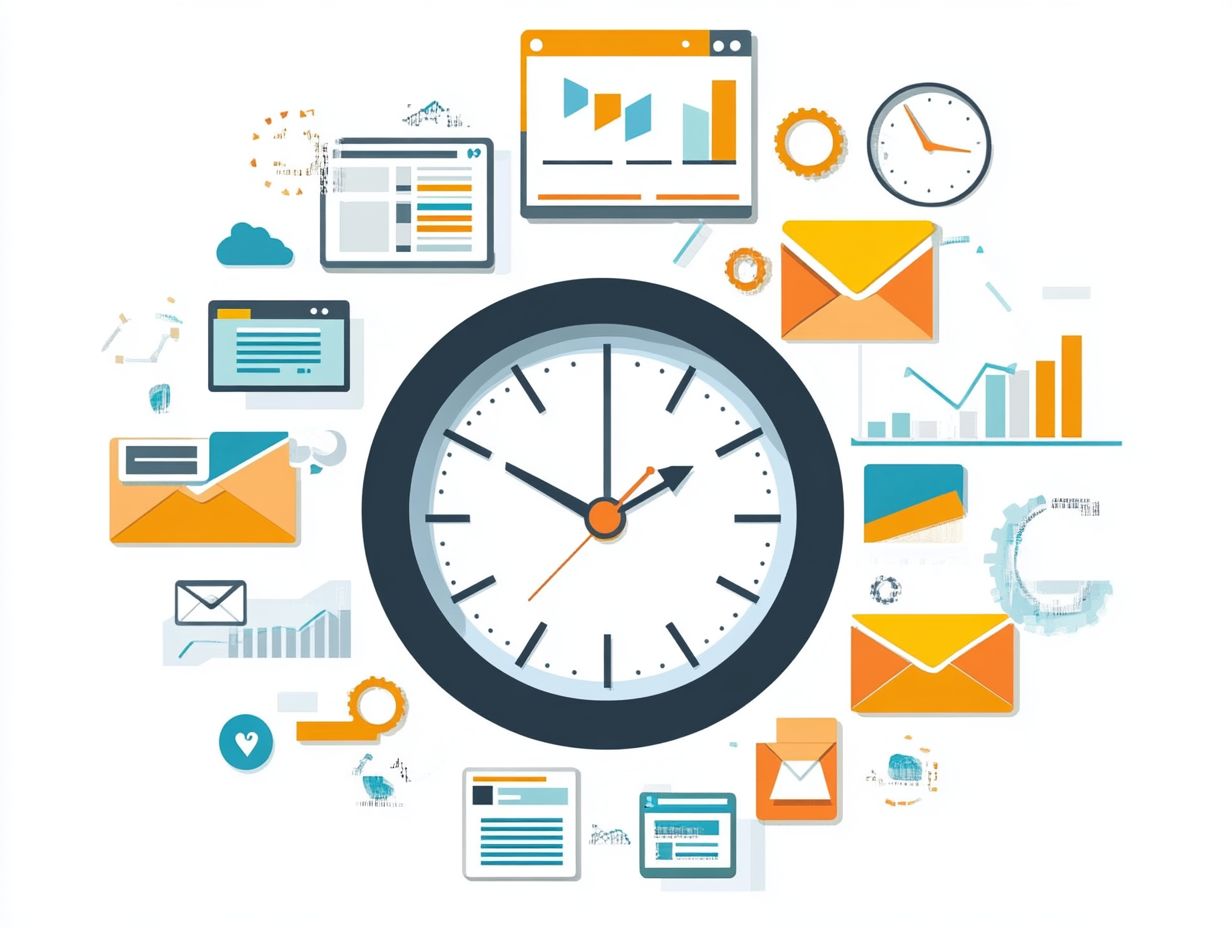
- Timing is crucial for email performance, as it can greatly impact open, click-through, and conversion rates.
- The best times to send emails vary based on peak engagement times, target audience, industry, and time zone differences.
- To determine optimal email timing, utilize email analytics, A/B testing, automation, scheduling, personalization, and segmentation strategies.
The Importance of Email Timing
Email timing is essential for the success of your cold email campaigns. It profoundly impacts both engagement and response rates. In an environment where inbox competition is intense, knowing the optimal moments to send your emails can be the deciding factor between capturing attention and landing in the dreaded spam folder.
By harnessing insights from email tracking and audience behavior, you can refine your cold email strategy to boost open rates and drive conversions. This article delves into the significance of email timing and presents strategies to elevate your email outreach efforts effectively.
How Timing Can Affect Email Performance
Timing plays a crucial role in your email performance. It impacts essential metrics like open rates and overall engagement.
Understanding the optimal moments to send your emails can significantly enhance how recipients interact with your content. For example, research indicates that emails dispatched mid-morning on weekdays tend to generate higher engagement compared to those sent during lunch or late in the day.
Incorporating follow-up emails within a well-planned timeframe can further boost your response rates. Testing different timing strategies is essential.
By experimenting with various sending times, you can analyze performance metrics and fine-tune your approach. This ultimately refines your email campaigns to resonate more effectively with your target audience.
The Best Times to Send Emails
Identifying the optimal times to send your emails is crucial for enhancing your outreach efforts. It maximizes response rates in your email campaigns. By strategically timing your communications, you can significantly improve engagement and drive better results.
Peak Email Engagement Times
Peak email engagement times can differ significantly across various industries and audiences. This directly influences the effectiveness of your email timing strategy.
Understanding these variations is vital for optimizing your communication efforts. By analyzing engagement metrics from sectors like retail, technology, and healthcare, you can gain valuable insights into when your recipients are most inclined to open and interact with your emails.
To refine your strategy even further, consider implementing A/B testing. A/B testing compares two versions of an email to see which one performs better. By sending emails at different times to segmented groups, you can uncover which timing resonates best with specific audiences.
Let's Set Up Your Lead Generation Strategy
Fill out the form below, and our team will get in touch with you to create a tailored solution for your business.
This iterative approach not only boosts your open rates but also allows you to tailor content to meet the unique preferences of diverse recipient groups, ultimately leading to improved results.
Factors to Consider for Optimal Email Timing
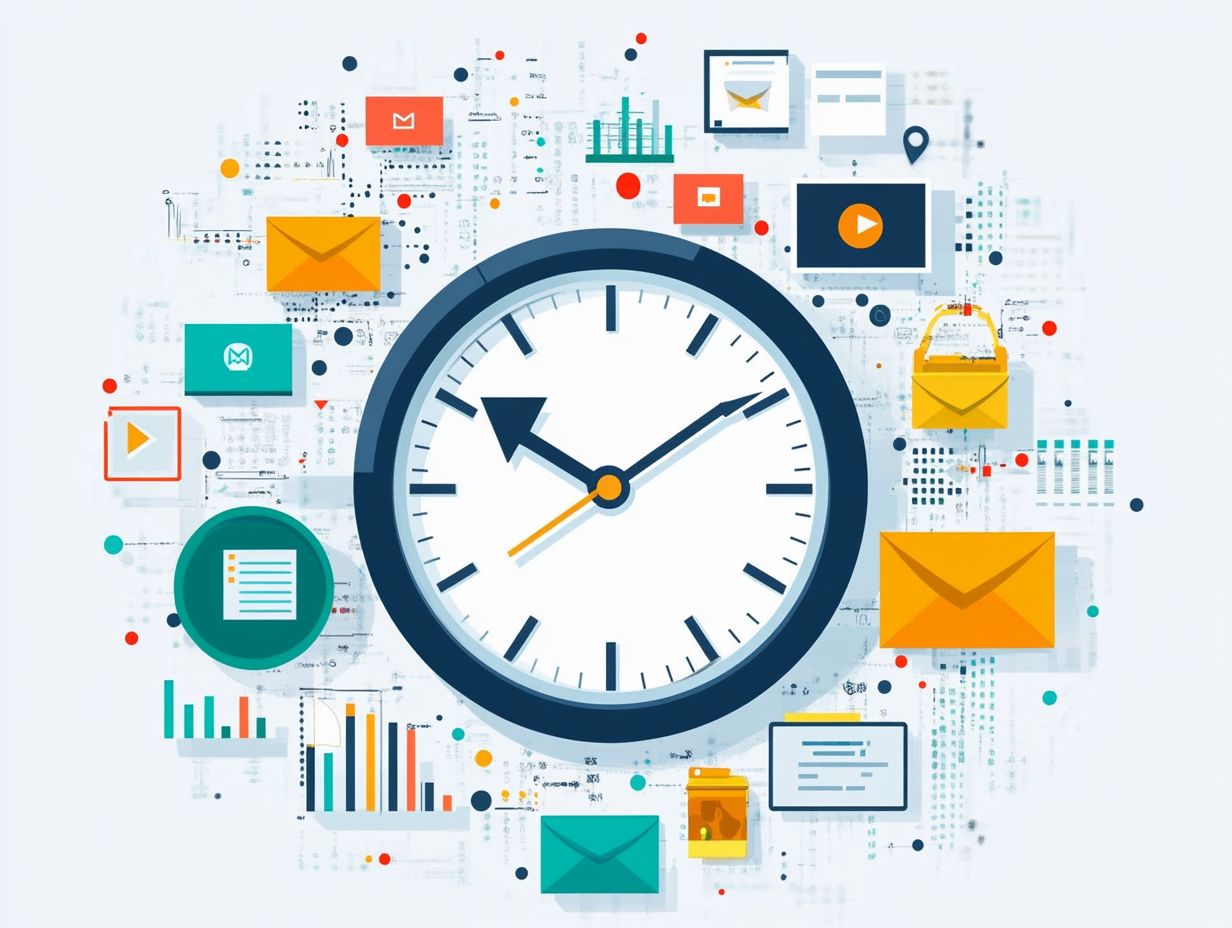
To achieve optimal email timing, consider several key factors. Think about recipient availability, keep an eye on industry-specific trends, and align everything with your overarching cold email strategy.
Each of these elements plays a crucial role in ensuring your emails land at the perfect moment.
Start analyzing your email timing today to see better open rates!
Target Audience and Industry
Understanding your target audience and their specific industry is vital for timing your email campaigns effectively.
Different industries showcase distinct patterns in response rates and overall engagement, shaped by their work and the audience’s preferences. For instance, those in the tech sector often appreciate quick, concise messages that align with their fast-paced environment. In contrast, the nonprofit sector may respond better to heartfelt narratives.
This diversity highlights the necessity of tailoring your email campaigns through comprehensive audience analysis. By considering industry trends, demographic insights, and historical data, you can develop personalized strategies that resonate profoundly, driving higher engagement and nurturing lasting relationships.
Time Zone Differences
Time zone differences are crucial for optimizing your email frequency, ensuring your messages reach recipients when they re most available.
By understanding the geographic distribution of your audience, you can significantly enhance the effectiveness of your email outreach. When you segment your lists based on recipients’ time zones, you can send emails to align with their routines think morning coffee breaks or post-lunch lulls. This strategy boosts the chances of your emails being opened and creates a more personalized experience.
Using tools to analyze engagement metrics by location allows you to refine your campaigns, adapting to behaviors and preferences that vary from region to region, leading to higher conversion rates.
Tools for Determining the Best Email Timing
Using tools for email tracking, A/B testing, and analytics can supercharge your campaigns by discovering the optimal timing.
Email Analytics and A/B Testing
Email analytics and A/B testing are powerful for evaluating the effectiveness of your email timing strategies.
Conducting A/B tests at various sending times helps you discover when your audience is most receptive. For example, sending the same email at different hours or on different days lets you effectively compare open and click-through rates. Analyzing these metrics yields critical insights into consumer behavior and preferences.
This data can inform your future campaigns by highlighting the best times to increase engagement.
Let's Set Up Your Lead Generation Strategy
Fill out the form below, and our team will get in touch with you to create a tailored solution for your business.
The goal is to continuously refine your email strategies, ensuring each campaign resonates with your target audience.
Strategies for Improving Email Timing
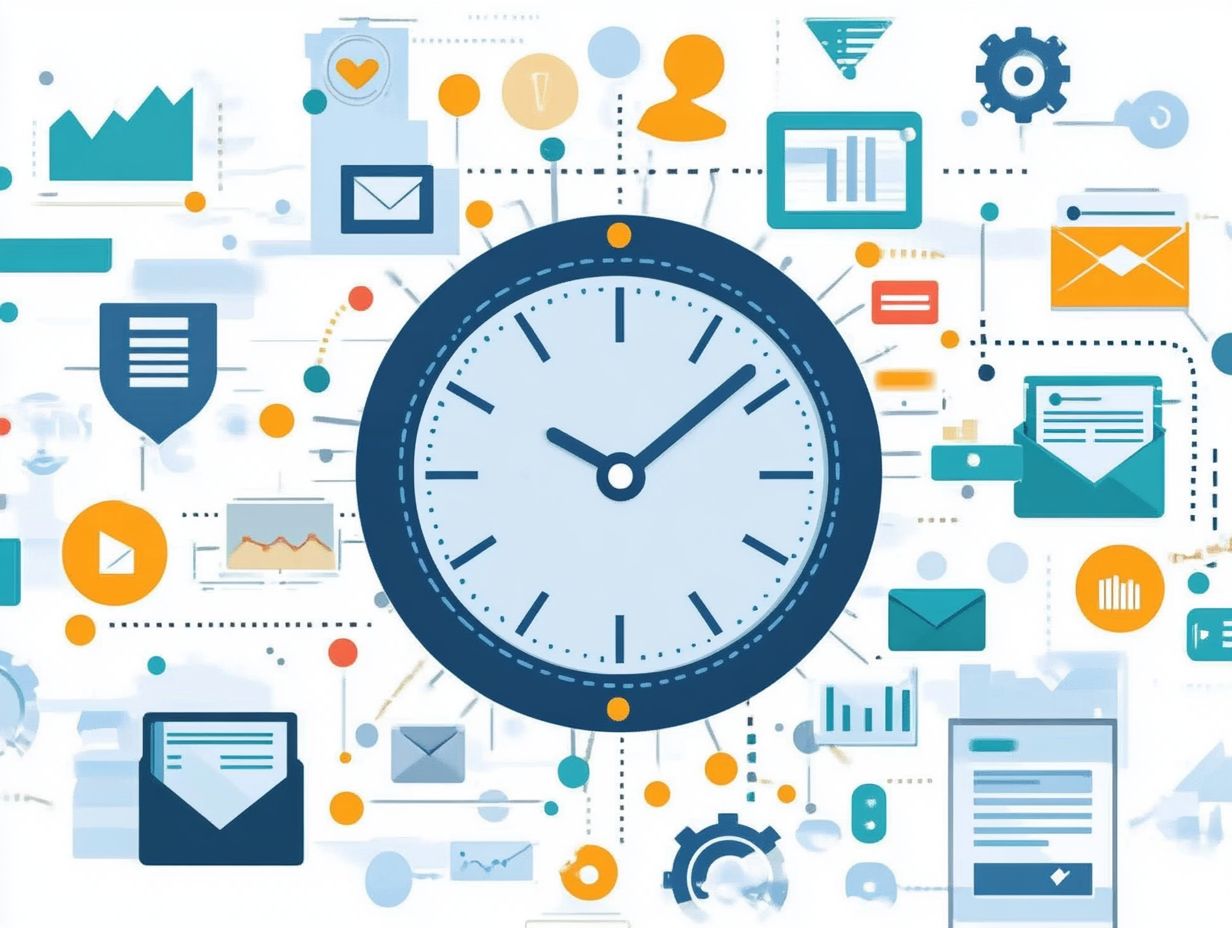
Implementing effective strategies for email timing can elevate your cold email approach and enhance overall engagement.
Automation and Scheduling
Automation and scheduling tools are critical for maintaining a consistent email frequency while optimizing delivery times.
These resources enable you to strategically time your communications, ensuring your messages align with your recipients’ availability and preferences. To leverage these tools fully, segment your audience based on previous interactions and interests, allowing you to deliver content that resonates.
Personalization shines by incorporating customizable options</b, such as the recipient's name or recent purchases, creating a tailored experience. By harnessing analytics, you can monitor engagement metrics, adjusting your future strategies to enhance effectiveness and maintain a genuine connection.
This approach leads to higher open rates and increased engagement, making your efforts even more rewarding.
Personalization and Segmentation
Personalization and segmentation are essential components of crafting email campaigns that truly resonate with your audience.
By diving into the nuances of various audience segments like demographics and buying behavior you can tailor your messages to align with individual preferences. Paying attention to these details can create an exciting connection! This meticulous approach significantly enhances the chances that recipients will engage with your content.
Looking at audience behavior allows you to pinpoint the optimal timing for sending emails, ensuring they land in inboxes when your audience is most receptive.
As a result, your campaigns become more dynamic, leading to improved open rates and heightened overall engagement.
Frequently Asked Questions
What is the science behind email timing?
The science behind email timing refers to the study of when the best time is to send an email for optimal open and click-through rates. This involves analyzing data and patterns to determine when your audience is most likely to engage with your email.
Why is email timing important?
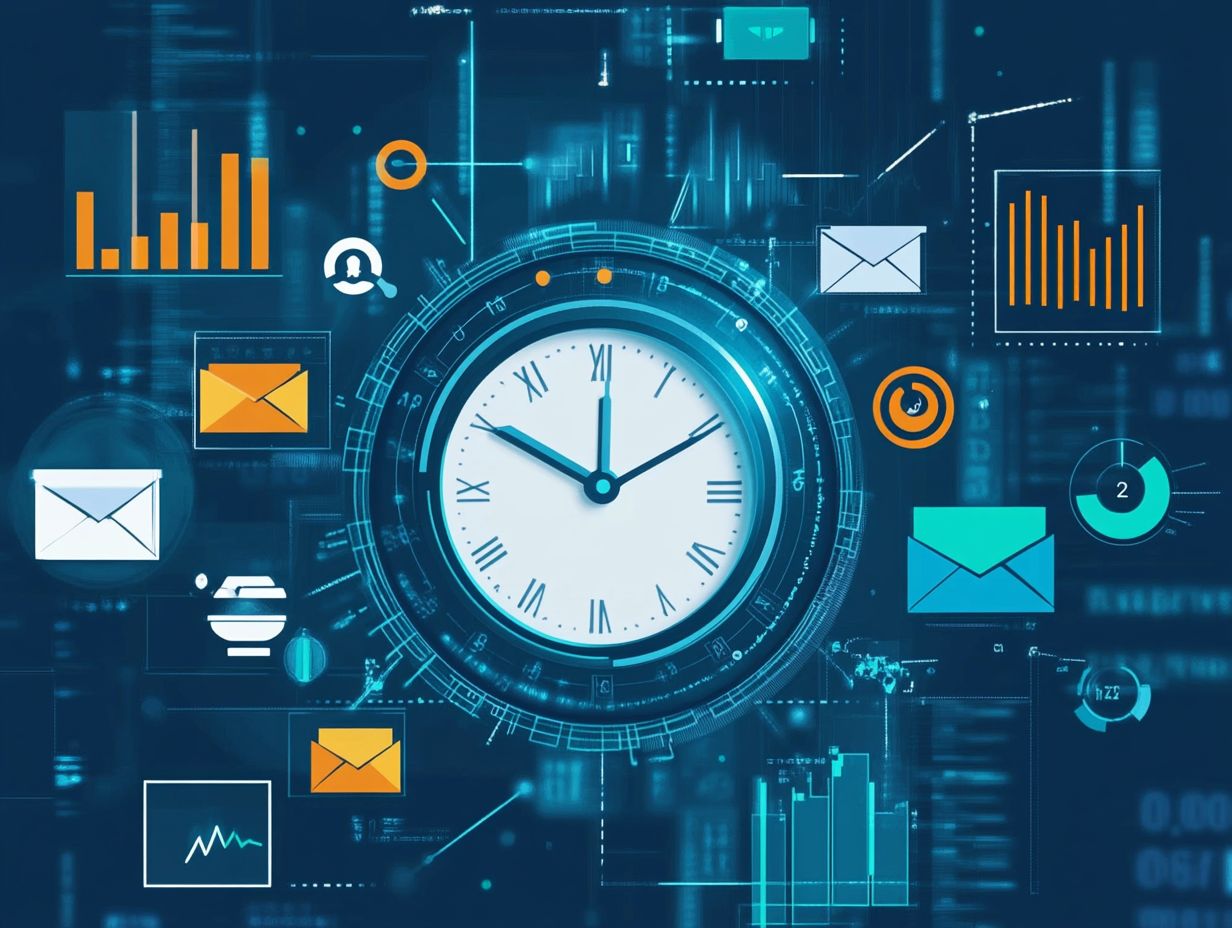
Email timing is crucial as it greatly impacts the success of your email marketing campaigns. Sending an email at the right time increases the chances of it being opened and read, leading to higher click-through rates, response rates, and conversions.
How do you determine the best time to send an email?
The best time to send an email varies depending on factors such as your target audience, industry, and location. Analyze your email data and experiment with different send times to see what works best for your specific audience.
Let's Set Up Your Lead Generation Strategy
Fill out the form below, and our team will get in touch with you to create a tailored solution for your business.
Are there any general guidelines for email timing?
- Studies have shown that Tuesday and Thursday mornings tend to have higher open and click-through rates.
- Weekends may experience lower engagement.
- Understanding optimal send days and recipient availability can significantly enhance email engagement.
However, it is important to analyze your own data and adjust accordingly.
Does email timing affect deliverability?
While email timing may not directly affect deliverability, it can indirectly impact it. If your email is sent at a time when your audience is less likely to engage, it may result in a lower open rate. This can signal to email providers that your email is not valuable and may affect future deliverability.
How Often Should I Analyze My Email Timing?
Regularly check when to send your emails. Consumer behavior changes, and so do trends.
Keep an eye on major events or holidays that might impact your audience. Adjust your send times to match their preferences!
Tracking email engagement is essential. It helps refine your cold email strategy and boosts your outreach efforts!

